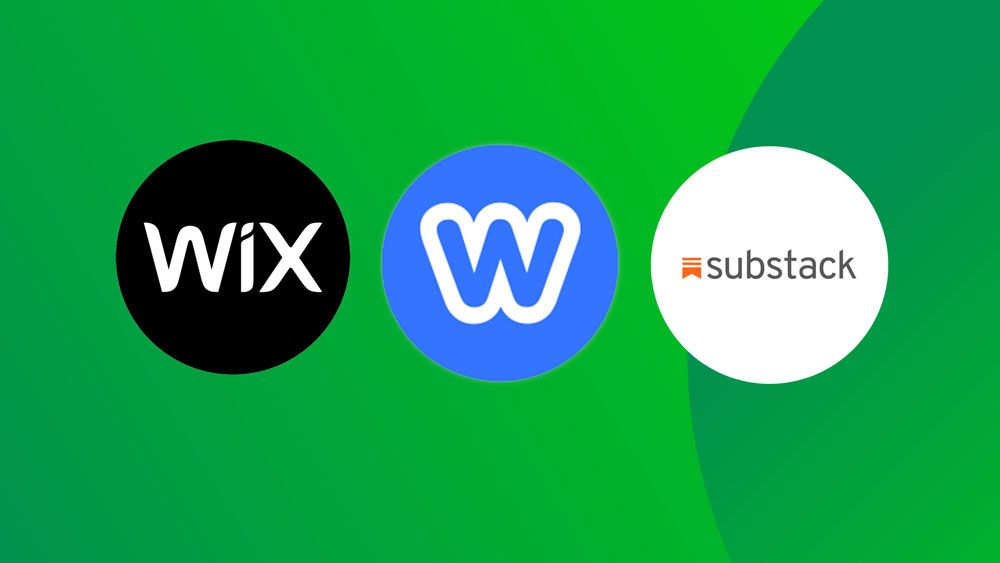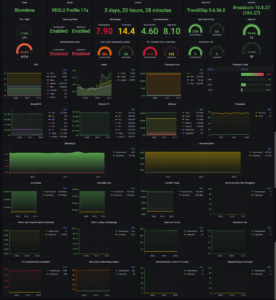Introduction to Blogging and Blog Platforms
Blogging has become a vibrant canvas for self-expression, creativity, and even entrepreneurship. Whether you want to share your thoughts on travel, cooking, or tech trends, starting a blog is an exciting journey. But before you dive in headfirst, you’ll need to choose the right platform that caters to your unique needs.
With countless options available today, finding the best free blog platforms can feel overwhelming. Each platform offers different features and functionalities tailored for various users—from casual bloggers to budding influencers. The good news? You don’t have to break the bank; there are fantastic free options waiting just for you! Let’s explore what these platforms offer and how they can help bring your blogging dreams to life.
The Benefits of Using a Free Blog Platform
Starting a blog doesn’t need to be expensive. Free blog platforms make it accessible for anyone with an internet connection.
One major benefit is the cost savings. You can focus on creating content without worrying about hosting fees or domain purchases. This allows you to invest time in honing your writing skills instead of managing technical aspects.
Free platforms often come with user-friendly interfaces. They simplify the blogging process, making it easy even for beginners. With drag-and-drop features and customizable templates, you can create a visually appealing site without needing coding knowledge.
Community support is another advantage. Many free platforms have active communities that offer tips, feedback, and encouragement. Connecting with other bloggers can provide inspiration and motivation as you grow your online presence.
These platforms typically offer built-in tools for analytics and SEO optimization. Tracking your performance helps refine strategies and reach a wider audience over time.
Top 5 Free Blog Platforms: Features and Comparison
When exploring the best free blog platforms, WordPress.com stands out with its robust features. It offers customizable themes and a user-friendly interface perfect for beginners.
Blogger is another solid choice, especially for those who prefer simplicity. Owned by Google, it integrates easily with other services like Google Analytics and AdSense.
Wix brings creativity to the forefront with its drag-and-drop functionality. Users can design visually stunning blogs without needing any coding skills.
Medium focuses on content quality rather than customization options. It’s ideal for writers looking to share their thoughts in a sleek environment while gaining exposure through an established community.
Tumblr combines blogging with social networking elements. Its unique format allows multimedia posts that can engage audiences in diverse ways, making it popular among younger bloggers seeking creativity and interaction.
WordPress.com
WordPress.com is a powerhouse in the world of blogging. It offers an intuitive interface that caters to both beginners and seasoned writers. You can start your blog quickly, thanks to its user-friendly setup.
One standout feature is the vast selection of themes. These templates are customizable, allowing you to create a unique look for your blog without needing coding skills.
Additionally, WordPress.com has built-in social sharing tools. This makes it easy for readers to share your content across various platforms, boosting visibility and engagement.
The platform also provides essential SEO features right out of the box. This helps improve your search rankings and attracts more visitors organically.
However, while it’s free to use with basic features, upgrading options allow for enhanced functionality down the road if you choose to expand your blogging journey.
Blogger
Blogger is one of the oldest and most reliable free blog platforms available. Launched by Pyra Labs in 1999, it has stood the test of time due to its user-friendly interface.
Setting up a blog on Blogger is quick and straightforward. You can create an account using your Google credentials, making accessibility easy for those who are already part of the Google ecosystem.
The platform offers customization options through various templates. While not as extensive as some competitors, they provide enough flexibility for beginners to develop their own unique style.
Another plus is that Blogger allows integration with Google AdSense, enabling users to monetize their content without much hassle. This makes it appealing for those looking to turn blogging into a source of income.
However, it’s essential to note that while you have control over your content, you’re still subject to Google’s terms and policies.
Wix
Wix stands out as a versatile option for budding bloggers. Its drag-and-drop interface makes design intuitive, even for beginners. You can choose from hundreds of templates tailored to various niches.
Customization options are plentiful, allowing you to tweak your site’s look and feel effortlessly. This is appealing if you want a unique identity without diving into coding.
Wix also offers built-in SEO tools that help improve visibility in search engines. Blog posts can be scheduled easily, keeping your content organized and timely.
The platform supports multimedia integration too, so adding videos or images enhances the reader’s experience. Plus, Wix provides an app market filled with features that expand functionality based on your needs.
With mobile optimization included, your blog will look good on any device right from the start. The combination of ease-of-use and creative freedom makes Wix an attractive choice among free blog platforms.
Medium
Medium is a unique platform that focuses on quality content over flashy design. Here, writers can share their thoughts with an audience eager for insightful articles.
The minimalist interface is user-friendly. This makes it easy for both new and seasoned bloggers to start writing right away. You don’t have to worry about complicated setups or themes.
One of Medium’s standout features is its built-in audience. Your posts may get discovered by readers interested in your niche, thanks to the platform’s recommendation algorithms. This enhances engagement without needing extensive promotion.
Medium also supports various formats—from essays and poetry to stories and reports—giving you creative freedom. Plus, the option to join the Partner Program allows you to earn money through your writing based on reader engagement metrics.
This blend of simplicity and community sets Medium apart as a compelling choice for aspiring bloggers looking for visibility without the hassle.
Tumblr
Tumblr stands out as a vibrant and eclectic platform for bloggers looking to express their creativity. It’s particularly popular among artists, writers, and those who enjoy multimedia content.
Customization is one of Tumblr’s key features. Users can tweak themes and layouts to reflect their unique style. This flexibility makes it easy to build a blog that feels personal.
The social aspect of Tumblr also sets it apart. Bloggers can easily follow each other, reblog posts, and engage with comments. This creates a strong sense of community where ideas flow freely.
With its emphasis on visuals, Tumblr is ideal for sharing images, GIFs, and videos alongside text posts. It’s perfect for anyone wanting to showcase their artistry or share captivating stories in dynamic ways.
However, potential users should consider its niche audience when choosing this platform—it’s not solely about written content but rather an immersive experience that combines various media elements.
Tips for Choosing the Right Free Blog Platform for Your Needs
Choosing the right free blog platform can feel overwhelming. Start by identifying your goals. Are you blogging for fun, or do you have a business in mind? This will guide your decision.
Consider ease of use. A user-friendly interface is crucial, especially if you’re new to blogging. Look for platforms that offer intuitive design tools and templates.
Think about customization options too. You want a platform that allows creativity without compromising functionality. Flexibility in layout and features can make your blog stand out.
Don’t forget mobile compatibility. Many readers access blogs on their phones, so ensure the platform supports responsive designs.
Check community support and resources available for troubleshooting or learning more about blogging best practices. A helpful community can enhance your experience significantly.
Conclusion
Choosing the right blogging platform can significantly impact your journey as a blogger. Free blog platforms provide an excellent starting point for those who want to share their thoughts, showcase their creativity, or even build a brand without financial commitment.
Each of the top five platforms—WordPress.com, Blogger, Wix, Medium, and Tumblr—offers unique features that cater to different audiences and needs. Whether you prioritize customization options or ease of use will influence your choice.
By considering factors like design flexibility, audience engagement tools, and community support, you can find the best free blog platform tailored to your requirements. Embrace this opportunity to express yourself while exploring what each platform has to offer!




